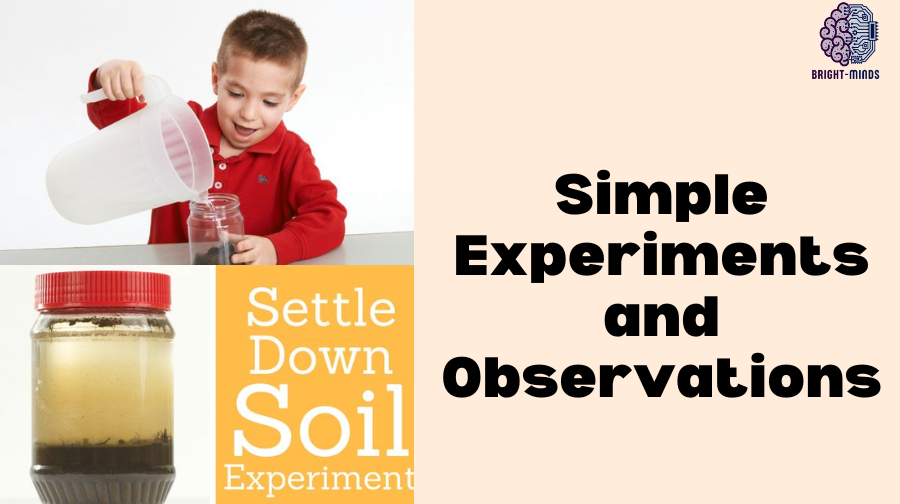
Explore basic Concepts Science for Class 1-3 students, including plants, animals, weather, and fun experiments to spark curiosity and foster a love for learning
In the early stages of education, particularly in Science for Class 1-3, science is introduced in a way that is engaging and accessible to young minds. At this level, science isn’t just a subject; it’s an exploration of the world around us, designed to ignite curiosity and lay the groundwork for more complex scientific understanding in later years. The basic science concepts introduced include topics such as plants, animals, and weather, which are integral to helping children understand the environment they live in.
1. Plants: Understanding the Green World
Plants are one of the first living things that children learn about in science. The lessons focus on the parts of a plant (roots, stems, leaves, flowers, fruits) and their respective functions. For instance, roots absorb water and nutrients, stems support the plant, and leaves are involved in photosynthesis.
- Life Cycle of a Plant: Understanding how a plant grows from a seed to a mature plant is fundamental. Children learn about the stages of germination, growth, flowering, and seed production. This teaches them about life cycles and the importance of plants in the ecosystem.
- Photosynthesis: At a basic level, children are introduced to the concept that plants make their food using sunlight, water, and carbon dioxide, and in the process, they produce oxygen which is essential for life.
- Activities: Simple activities such as planting seeds in a pot and observing the growth process, or drawing diagrams of plants and labeling their parts, can help reinforce these concepts. Encouraging children to take care of a plant teaches them responsibility and the importance of nurturing living things.
2. Animals: Exploring the Animal Kingdom
Learning about animals is equally fascinating for children. At this level, the focus is on understanding different types of animals, their habitats, and basic needs.
- Classification: Animals can be classified into various categories such as domestic, wild, aquatic, and birds. Understanding these categories helps children identify animals in their surroundings.
- Habitats: Children learn about the different environments where animals live, such as forests, oceans, deserts, and mountains. This helps them understand how animals adapt to their surroundings.
- Food Chain: Basic concepts such as herbivores, carnivores, and omnivores are introduced. Children learn about how animals depend on plants and other animals for food, which leads to a basic understanding of the food chain.
- Activities: Activities like visiting a zoo, watching documentaries on animals, or creating an animal habitat diorama can make learning about animals more interactive and enjoyable.
3. Weather: Understanding the Elements
Weather is another important topic in the early science curriculum. Children learn about different weather conditions and how they affect our daily lives.
- Weather Conditions: Basic weather types such as sunny, rainy, windy, and snowy are introduced. Children learn to associate these conditions with seasons and understand the changes that come with each.
- Seasons: Understanding the four seasons – summer, winter, spring, and autumn – helps children predict weather patterns and prepare for changes in the environment.
- Impact on Daily Life: Children learn how weather influences what we wear, the activities we do, and even what we eat. This practical understanding makes weather a relatable topic for them.
- Activities: Keeping a weather chart, making simple weather instruments like a wind vane or a rain gauge, and observing weather changes daily can be great ways to engage children with this topic.
Simple Experiments and Observations

Hands-on learning is crucial in the early years of science education. Simple experiments and observations allow children to see scientific principles in action, making abstract concepts more concrete.
- Growing a Plant Experiment: By planting seeds and observing their growth over time, children learn about the conditions necessary for plant growth. They can record the changes they observe daily, which helps them understand the plant life cycle.
- Floating and Sinking: Children can experiment with different objects to see which ones float or sink in water. This activity introduces them to the concepts of density and buoyancy in a fun and engaging way.
- Weather Observation: Keeping a daily weather diary where children note down the temperature, wind conditions, and any precipitation helps them become more aware of their environment. This also introduces them to the idea of collecting and analyzing data.
These experiments are not only educational but also encourage children to ask questions, make predictions, and understand the scientific method.
Encouraging Curiosity and Inquiry

The most important aspect of science education at this level is fostering a sense of curiosity and inquiry. Children are naturally curious, and Science for Class education should build on this curiosity by encouraging them to ask questions and seek answers.
- Asking Questions: Teachers and parents should encourage children to ask questions about the world around them. Questions like “Why is the sky blue?” or “How do birds fly?” can lead to fascinating discussions and discoveries.
- Exploration: Encouraging children to explore their surroundings, whether it’s a garden, a park, or a beach, helps them make observations and learn from the world around them.
- Critical Thinking: Simple problem-solving activities and thought experiments help children develop critical thinking skills. For instance, asking children to predict what might happen if a plant doesn’t get water for a week, and then testing their hypothesis, helps them understand cause and effect.
- Storytelling: Using stories and narratives to explain scientific concepts can make learning more relatable and memorable. For example, telling a story about how a plant grows or how animals prepare for winter can help children understand and retain scientific knowledge.
Conclusion
Science for Class 1-3 is not just about learning facts; it’s about nurturing a sense of wonder and inquiry. By introducing basic concepts in an engaging and interactive way, we can help children develop a love for science that will stay with them throughout their lives. Through hands-on experiments, observations, and encouraging curiosity, children can begin to see the world through the lens of a scientist. This early foundation is crucial for their future success in more advanced scientific studies.
you may be interested in this blog here:-
What Are the Key Features of Salesforce’s Model Builder?
Why Use SAP SuccessFactors: A Game-Changer for HR and Business Growth
Digital Jungle: How to choose the Best Digital Marketing Service in 2024
